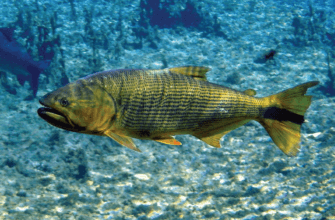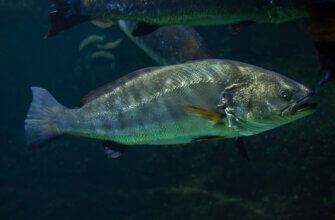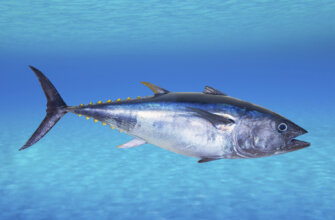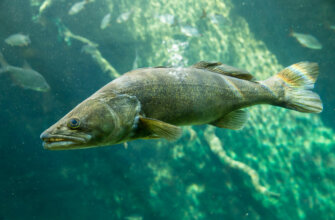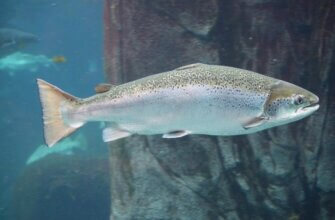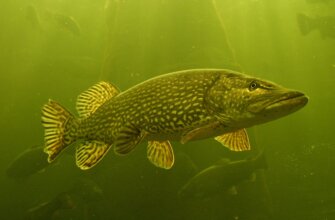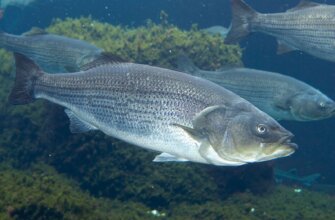Crappie is a type of freshwater fish that belongs to the sunfish family (Centrarchidae). It is a popular game fish in North America, particularly in the United States and Canada. Crappie are known for their delicious taste and are often sought after by anglers.
Crappie are typically found in lakes, ponds, rivers, and reservoirs with abundant vegetation or submerged structures like fallen trees and brush piles. They prefer clear water and tend to stay close to underwater cover, making them challenging to catch at times.
Anglers often target crappie using a variety of fishing techniques. Popular methods include using live bait such as minnows or small jigs, as well as fishing with artificial lures such as crappie jigs, spinners, and crankbaits. Crappie fishing is often done from boats, but they can also be caught from shore or fishing piers.
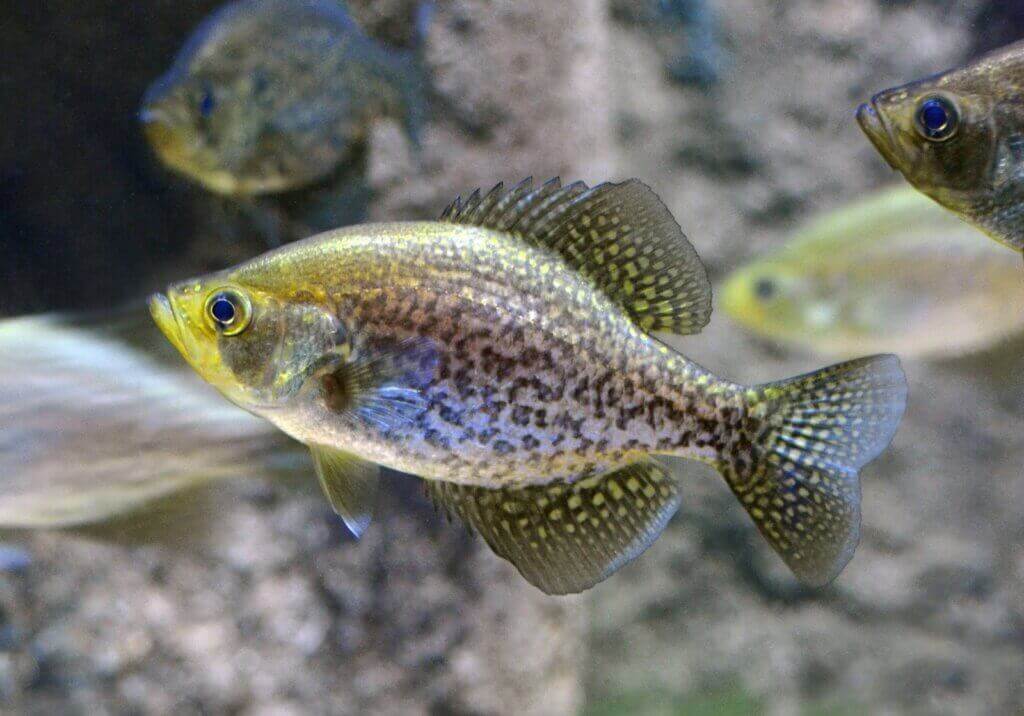
Crappie can be caught year-round, but they are more active during the spring and fall seasons when water temperatures are favorable. During these times, crappie move into shallower waters to spawn and feed. They are known to form schools, so once you find one crappie, there’s a good chance there are more nearby.
Crappie fishing is popular among recreational anglers due to the excitement of catching them and their tasty flesh. They are often cooked by pan-frying, baking, or grilling, and their white, flaky meat is highly regarded for its mild flavor.
It’s worth noting that fishing regulations and size limits for crappie can vary depending on the region and specific fishing location. It’s always a good idea to check with local fishing authorities or consult fishing regulations to ensure compliance with any size or bag limits in your area.
Species
There are two main species of crappie: black crappie (Pomoxis nigromaculatus) and white crappie (Pomoxis annularis). Both species belong to the sunfish family (Centrarchidae) and are highly sought after by anglers for their delicious taste and sporting qualities.
Black crappie are typically found in clear, deep lakes and reservoirs with plenty of underwater cover, such as brush piles, submerged timber, and weed beds. They have a silvery-gray body with black or dark green spots that form a mottled pattern. They also have seven or eight spines on their dorsal fin.
White crappie, on the other hand, prefer shallower, more turbid waters with less cover, such as rivers, ponds, and shallow lakes. They have a lighter body color than black crappie, with vertical bars on their sides that are often faint or broken. They also have six dorsal fin spines.
Both black and white crappie are similar in shape, with a deep, flattened body and a large mouth with extendable jaws. They are schooling fish and often congregate in large groups, making them easier to target for anglers.
In terms of size, crappie can range from around 4 to 20 inches in length, with the average size being between 8 and 12 inches. However, larger specimens can be caught, especially in certain locations known for producing trophy-sized crappie.
Overall, both black and white crappie are highly regarded by anglers and are widely considered to be some of the best-tasting freshwater fish available.
Appearance
Crappie have a distinct appearance that makes them easy to identify. They have a deep, laterally compressed body, which means that their body is flattened from side to side. This body shape allows them to maneuver easily through underwater vegetation and other structures.
The two main species of crappie, black crappie and white crappie, have slightly different appearances. Black crappie have a silvery-gray body with black or dark green spots that form a mottled pattern. The dorsal fin of black crappie has seven or eight spines, and their anal fin has six spines.
White crappie have a lighter body color than black crappie, with vertical bars on their sides that are often faint or broken. The dorsal fin of white crappie has six spines, and their anal fin has five or six spines.
Both species of crappie have a large mouth with extendable jaws, which allows them to consume prey that is larger than their mouth. They also have a single, continuous dorsal fin that runs along their back and is divided into two distinct sections.
Crappie have relatively large eyes, which are positioned high on their head. This gives them excellent vision and helps them locate prey in low-light conditions.
Overall, the appearance of crappie is quite distinctive and makes them easy to identify, even for novice anglers.
Size and weight
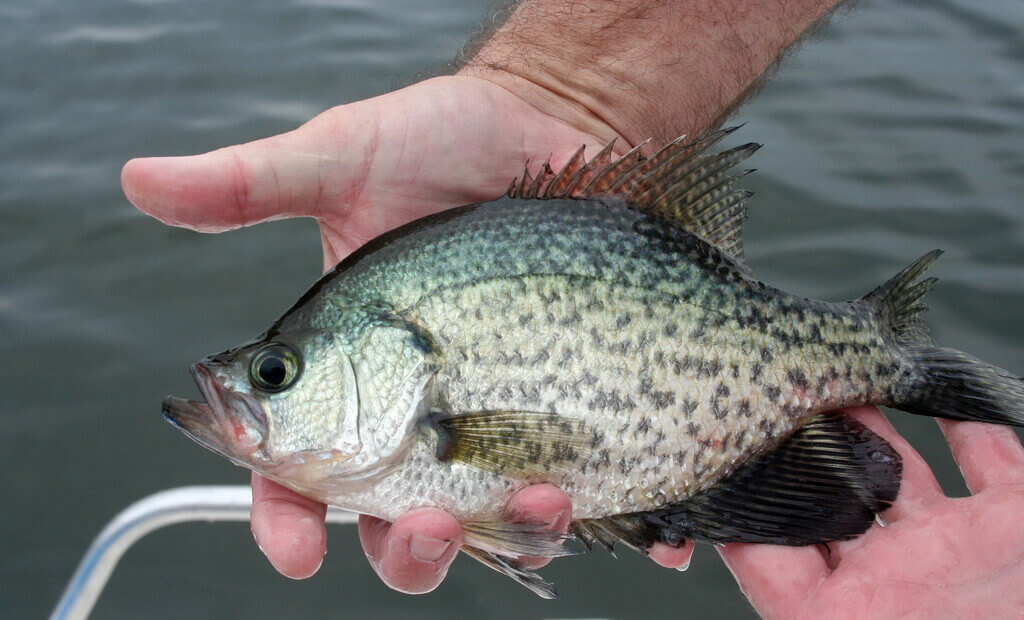
Crappie can vary in size and weight depending on several factors, including the species, location, and environmental conditions. On average, crappie typically range from 4 to 20 inches in length. However, the most commonly caught crappie fall within the range of 8 to 12 inches.
In terms of weight, crappie generally weigh between 0.5 to 2 pounds. The weight of a crappie is influenced by its length, age, and overall health. Larger individuals can reach weights of 2 to 3 pounds or more, but these are considered exceptional specimens and are often referred to as “trophy” crappie.
It’s important to note that crappie growth rates can vary in different bodies of water. Factors such as available food sources, water temperature, and competition for resources can influence the growth rate of crappie populations.
When targeting crappie, anglers often focus on catching fish within the desirable size range for eating, which is typically around 9 to 12 inches. These sizes provide a good balance between fillet yield and flavor.
Diet
Crappie are opportunistic feeders and have a diverse diet. Their primary food sources consist of small fish, insects, crustaceans, and various aquatic organisms. The specific diet of crappie can vary depending on their size, location, and the availability of prey.
Young crappie primarily feed on tiny zooplankton, small insects, and insect larvae. As they grow larger, they begin to prey on small fish such as minnows, shad, and other small baitfish. Crappie are known to be voracious predators, using their excellent vision to hunt and ambush their prey.
In addition to fish, crappie also consume a wide range of invertebrates, including crayfish, shrimp, snails, and aquatic insects like mayflies, caddisflies, and dragonflies. They are also known to feed on zooplankton, small crustaceans, and even small amphibians if available.
Crappie are most active during low-light conditions, such as early morning and evening, when they tend to feed more actively. They often position themselves near underwater structures or vegetation, waiting for unsuspecting prey to swim by. Crappie are known to be attracted to structures like submerged trees, weed beds, brush piles, and docks, where they can find both food and shelter.
Anglers targeting crappie often use baits and lures that mimic the small fish or invertebrates they commonly feed on. Minnows, small jigs, soft plastic baits, and small crankbaits are popular choices for crappie fishing.
Understanding the preferred prey and feeding habits of crappie can be beneficial in selecting the right bait and location to increase your chances of a successful catch.
Behavior
Crappie exhibit certain behaviors that are important to understand when fishing for them or observing their natural habits.
Here are some key behaviors of crappie:
- Schooling. Crappie are known to form schools or groups, especially during certain times of the year. These schools can consist of individuals of similar size and can vary in size from a few fish to larger groups numbering in the dozens or even hundreds. Schooling provides crappie with safety in numbers, better feeding opportunities, and increased chances of successful reproduction.
- Structure-Oriented. Crappie are structure-oriented fish, meaning they are often found near underwater structures such as submerged trees, brush piles, weed beds, docks, and other objects that provide cover and shelter. They use these structures as ambush points to hide and wait for their prey. Fishing around or near these structures is a popular technique for targeting crappie.
- Diurnal Feeding. Crappie are most active during low-light conditions, particularly at dawn and dusk. They have excellent low-light vision, which allows them to locate and prey on smaller fish and aquatic organisms. However, crappie can also feed throughout the day, especially if food sources are abundant or when conditions are favorable.
- Seasonal Movements. Crappie exhibit seasonal movements in response to changes in water temperature and spawning behavior. They tend to move into shallower water during the spring for spawning, often near the same areas where they were hatched. In colder months, they may retreat to deeper waters with more stable temperatures.
- Ambush Predators. Crappie are ambush predators, relying on their excellent camouflage and patience to ambush unsuspecting prey. They often position themselves near structures or vegetation and wait for prey to swim by. When an opportunity arises, they swiftly strike and capture their prey.
- Sensitivity to Water Quality. Crappie are sensitive to changes in water quality, especially in terms of dissolved oxygen levels. They prefer clear or slightly turbid waters with good oxygenation. Extreme temperature changes, pollution, or low oxygen levels can negatively impact their behavior and overall health.
Understanding these behaviors can help anglers effectively target crappie and improve their chances of a successful catch. It’s important to adapt fishing techniques and bait choices based on the specific behaviors and preferences of crappie in your fishing location.
Spawning
Crappie undergo spawning behavior during specific times of the year, typically in the spring. The timing of their spawning can vary based on geographic location, water temperature, and other environmental factors.
Here’s an overview of the spawning behavior of crappie:
- Pre-Spawn. Prior to spawning, crappie exhibit pre-spawn behavior. This usually occurs when the water temperature reaches around 55 to 60 degrees Fahrenheit (12 to 15 degrees Celsius). During this phase, crappie begin to move from deeper waters toward shallower areas near the spawning grounds.
- Spawning Grounds. Crappie typically prefer to spawn in areas with suitable substrate, such as submerged vegetation, brush piles, submerged logs, or other types of structure. They may also spawn near the shallow edges of lakes, ponds, or backwaters with gravel or sand bottoms.
- Nest Building. Male crappie take the lead in nest building. They clear and fan out a shallow depression on the substrate using their tails. The nests are typically around 1 to 3 feet in diameter, depending on the size of the fish. The cleared areas may resemble small circular or oval-shaped depressions on the bottom.
- Spawning Process. Once the nest is prepared, female crappie approach the nest site to deposit their eggs. A female may lay several thousand eggs, and multiple females may use the same nest. The male then fertilizes the eggs by releasing his milt over them. The eggs adhere to the substrate and are left unattended by the parents.
- Post-Spawn. After spawning, both male and female crappie may move away from the nest sites and return to deeper water. The male may continue to guard the nest for a short period of time to protect the eggs from predators. The eggs hatch within a week or so, depending on water temperature.
During the spawning period, crappie can become more active and aggressive in their feeding behavior. Anglers often target crappie near their spawning areas, using techniques such as casting small jigs, using live bait, or fishing with imitation crappie spawn sacs or lures.
It’s important to note that some fishing regulations prohibit targeting crappie during their spawning period to protect the vulnerable spawning fish and ensure healthy populations. Always check local fishing regulations and adhere to any restrictions or guidelines in place.
Fishing
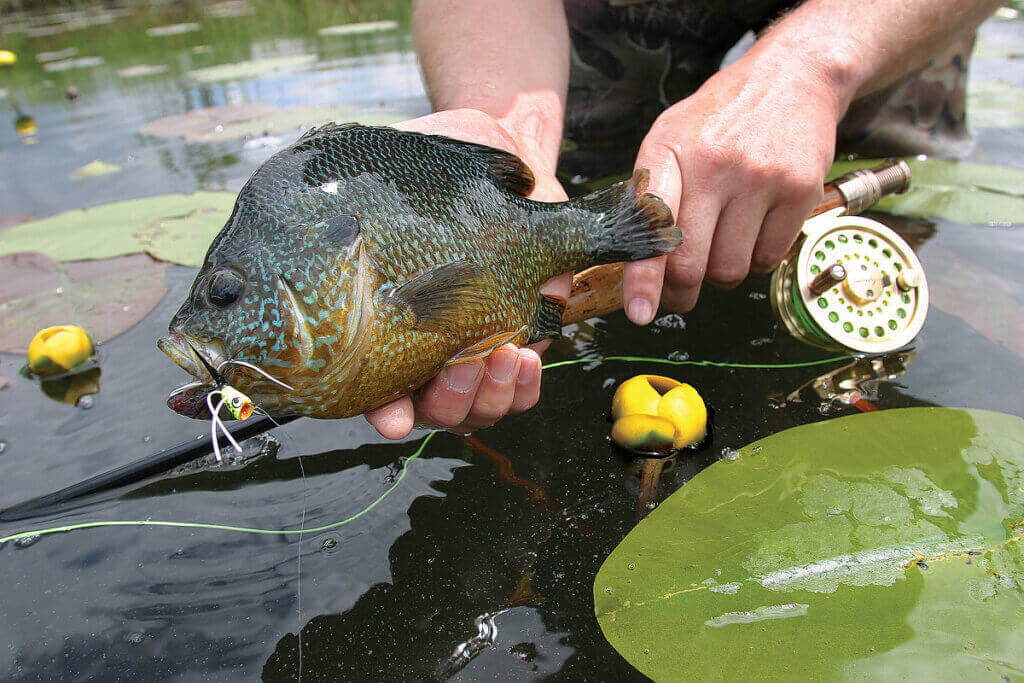
Fishing for crappie can be a rewarding experience, whether you’re a novice angler or an experienced fisherman.
Here are some tips and techniques to help you increase your chances of catching crappie:
- Location. Look for areas with suitable crappie habitat, such as lakes, ponds, rivers, or reservoirs that have submerged structures like fallen trees, brush piles, or weed beds. Crappie often seek cover near these structures.
- Time of Day. Crappie are most active during low-light periods, such as dawn and dusk. Fishing during these times can increase your chances of success. However, crappie can be caught throughout the day, especially if you’re fishing in the right locations.
- Equipment. Use light to medium-light fishing tackle to target crappie. A spinning rod and reel combo in the 4- to 8-pound test range is suitable for most crappie fishing situations. Monofilament or fluorocarbon line in the 4- to 8-pound range is commonly used. Lighter tackle allows for better sensitivity to feel the subtle bites of crappie.
- Bait and Lures. Crappie are known to take a variety of baits and lures. Live baits such as minnows, worms, or crappie-sized shiners are popular choices. Hook the live bait through the lips or just behind the dorsal fin to keep it active. Crappie jigs in various colors and sizes, typically 1/16 to 1/32 ounce, are highly effective as well. Soft plastic baits like tubes, grubs, or minnow imitations can also be successful.
- Presentation. When using live bait, cast or suspend it near structures or cover where crappie are likely to be hiding. Slowly retrieve the bait or allow it to suspend at the desired depth. When using jigs or soft plastic baits, experiment with different retrieval techniques, such as a slow, steady retrieve or a jigging motion.
- Depth. Crappie may be found at different depths depending on the time of year and water temperature. In the spring, they tend to move into shallower waters for spawning. During summer and fall, they may be found at various depths, from shallow to deeper waters. Experiment with different depths until you locate the active fish.
- Patience and Observation. Crappie can be finicky biters, so patience is key. Pay attention to any subtle taps or line movements, as crappie bites can be light. If you notice a particular spot is producing bites, stay in the area and work it thoroughly, as crappie are often found in schools.
- Safety and Regulations. Always ensure you are following local fishing regulations and obtain the necessary fishing licenses. Be mindful of the size and bag limits for crappie in your area.
Remember to practice responsible catch and release, especially for larger crappie, to help maintain healthy fish populations for future generations of anglers.
Overall, experimenting with different techniques, locations, and bait choices can help you find success when fishing for crappie. Enjoy the experience of being on the water and the thrill of reeling in these popular freshwater fish.
Lures
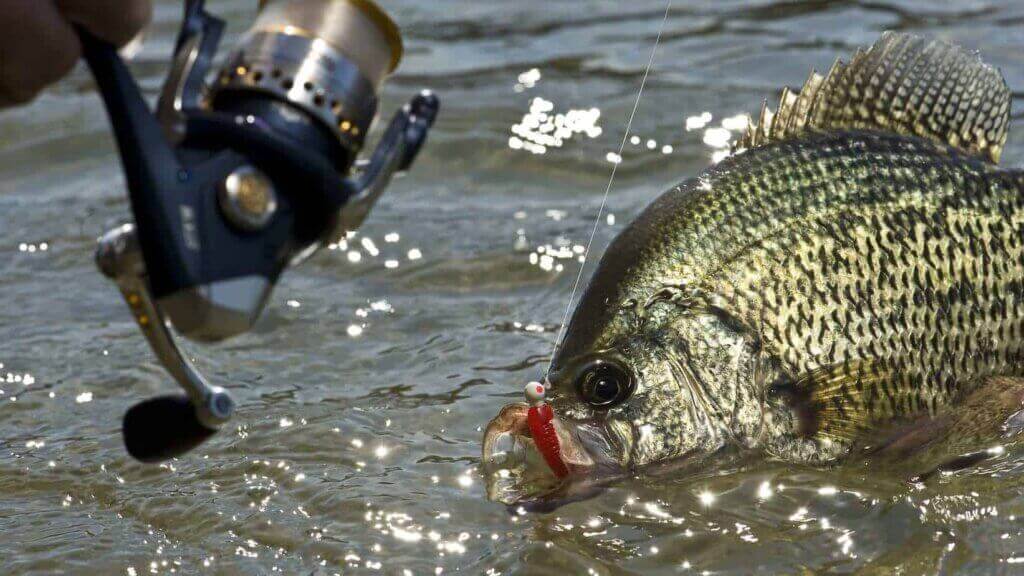
When it comes to lures for crappie fishing, there is a wide range of options available.
Here are some popular lure types and styles that are commonly used to target crappie:
- Jigs: Jigs are one of the most versatile and effective lures for crappie. They consist of a lead head and a soft plastic body or a feather or hair dressing. Jigs come in various colors, sizes, and shapes. The most commonly used jig sizes for crappie range from 1/16 to 1/32 ounce. Experiment with different colors and retrieve speeds to find what the crappie are responding to on a particular day.
- Grubs and Tubes: Soft plastic grubs and tubes are popular crappie lures. They can be rigged on a jig head or used with a plain hook. These lures mimic small baitfish, insects, or other prey that crappie feed on. They come in various sizes, colors, and patterns. Try using natural colors such as white, chartreuse, or black, or experiment with brighter and more vibrant colors to trigger a response from the fish.
- Crankbaits: Crankbaits are effective for covering water and enticing crappie to strike. Look for small-sized crankbaits with a tight wobbling action. Shallow-diving or medium-diving crankbaits that run at a depth of 4 to 8 feet are commonly used for crappie. Opt for colors that mimic small baitfish or choose brighter colors for better visibility in stained or murky water.
- Spinners: Spinners with small blades and a dressed treble hook can be effective for crappie fishing. The spinning blade creates flash and vibration, attracting the attention of crappie. Experiment with different blade colors and sizes to find what works best on a given day.
- Inline Spinners: Inline spinners are another popular choice for crappie. These lures feature a spinner blade that rotates around a straight wire shaft. They can be effective in clear or lightly stained water. Use smaller-sized inline spinners in silver, gold, or white colors.
- Crappie Plastics: There are various plastic baits specifically designed for crappie fishing, such as small swimbaits, minnow imitations, and shad-shaped soft plastics. These baits can be rigged on a jig head or used with a weighted hook. They often feature realistic designs and swimming actions that entice crappie to strike.
Remember to vary your retrieve speed, depth, and presentation techniques when using lures to figure out what the crappie are responding to on a given day. Pay attention to the conditions and adjust accordingly.
It’s worth noting that crappie can have different preferences based on their location, water clarity, and other factors, so experimentation and adapting to the specific fishing situation can lead to success.
Here are some examples of popular fishing lures for crappie, along with their models and specifications:
- Bobby Garland Baby Shad:
- Model: Baby Shad.
- Specifications: 2 inches long, available in various colors.
- Description: This soft plastic bait has a realistic minnow shape and a subtle tail action that attracts crappie. It can be used on a jig head or with a plain hook.
- Strike King Mr. Crappie Slab Slasher Jig:
- Model: Slab Slasher Jig.
- Specifications: Available in various sizes (1/16 oz to 1/8 oz) and colors.
- Description: This jig features a lead head with a sharp hook and a soft plastic body. It has a unique shape that provides a realistic swimming action, making it effective for enticing crappie.
- Rebel Crappie Crankbait:
- Model: Crappie Crankbait.
- Specifications: Diving depth of 4-6 feet, available in various colors.
- Description: This small crankbait is designed to mimic a small baitfish. It has a tight wobbling action and attracts crappie with its diving depth and realistic appearance.
- Mepps Aglia Spinner:
- Model: Aglia Spinner.
- Specifications: Available in various sizes (e.g., 1/16 oz to 1/8 oz), blade colors, and blade types (e.g., silver, gold).
- Description: The Mepps Aglia Spinner is a classic inline spinner with a rotating blade. It creates flash and vibration, attracting crappie with its enticing presentation.
- Kalin’s Triple Threat Grub:
- Model: Triple Threat Grub.
- Specifications: 2 inches long, available in various colors.
- Description: This soft plastic grub has a triple-tail design that produces a lifelike swimming action. It can be rigged on a jig head or used with a weighted hook to target crappie.
Please note that specific models and specifications may vary based on the manufacturer and availability. It’s always a good idea to visit your local tackle shop or check reputable online retailers to explore a wider selection of crappie lures and choose the ones that suit your fishing preferences and the conditions you’ll be fishing in.
Baits
When it comes to baits for crappie fishing, both live baits and prepared baits can be effective.
Here are some popular baits for crappie, along with additional details:
- Live Minnows: Small live minnows, such as fathead minnows or shiners, are one of the most widely used baits for crappie. Hook the minnow through the lips or just behind the dorsal fin and present it near structures or cover where crappie are likely to be hiding. Live minnows provide a natural scent and movement that entices crappie to strike.
- Crappie Jigs: Jigs tipped with live bait or used alone can be highly effective for crappie. They come in various sizes, colors, and styles. The most popular jig sizes for crappie range from 1/16 to 1/32 ounce. Pair jigs with soft plastic bodies, such as grubs or tubes, or add a small piece of live bait, such as a minnow or worm, to enhance their appeal.
- Crappie Nibbles: Crappie nibbles are small, soft, scented baits that can be added to hooks, jigs, or even used alone. They come in different colors and flavors, such as chartreuse, pink, or garlic. Crappie nibbles slowly dissolve in the water, releasing scent and attracting crappie to your bait.
- Worms: Nightcrawlers and red worms are effective live baits for crappie. Thread a whole worm onto a small hook or use a portion of a worm as bait. Worms wriggle and emit natural scents that entice crappie to strike.
- Prepared Crappie Baits: There are various prepared baits specifically designed for crappie fishing. These baits often come in jars or containers and can be scented or flavored to attract crappie. They can be applied to hooks, jigs, or used on their own. Experiment with different flavors, such as shad, minnow, or garlic, to see what works best in your fishing area.
When using live baits, it’s important to keep them lively and fresh. Carry a bait bucket or container with aeration to maintain the oxygen levels and the vitality of the live baits.
Remember that the preferences of crappie can vary depending on factors such as water clarity, weather conditions, and time of year. It’s often a good idea to have a variety of baits on hand and be willing to adapt to the specific preferences of the crappie you are targeting.
Rods
When it comes to choosing a fishing rod for crappie, there are several factors to consider, including length, action, power, and material.
Here are some examples of fishing rods commonly used for crappie fishing:
- Ultralight Spinning Rods:
- Length: Typically ranging from 5 to 7 feet.
- Action: Fast to moderate-fast action.
- Power: Ultra-light to light power.
- Material: Graphite or fiberglass.
- Description: Ultralight spinning rods are a popular choice for crappie fishing. They offer good sensitivity to detect subtle bites and provide a light and responsive feel. The fast to moderate-fast action helps with casting accuracy and hook sets, while the ultra-light to light power allows for better control over small baits and lighter lines.
- Crappie Jigging Rods:
- Length: Typically ranging from 5 to 7 feet.
- Action: Moderate to moderate-fast action.
- Power: Light to medium-light power.
- Material: Graphite or fiberglass.
- Description: Crappie jigging rods are specifically designed for vertical jigging techniques commonly used for crappie. They have a slightly stiffer action compared to ultralight spinning rods, allowing for better control and sensitivity when jigging and working lures. The light to medium-light power provides the right balance for hook sets and fighting crappie.
- Telescopic Rods:
- Length: Varies, but commonly ranging from 8 to 12 feet.
- Action: Fast to moderate-fast action.
- Power: Light to medium-light power.
- Material: Graphite or composite.
- Description: Telescopic rods are collapsible and convenient for anglers who want a longer rod for extended reach or for fishing from shorelines, piers, or bridges. They are available in different lengths to suit various fishing situations. Look for models with good sensitivity, a fast to moderate-fast action, and light to medium-light power.
- Crappie Fly Rods:
- Length: Typically ranging from 7 to 9 feet.
- Action: Medium to medium-fast action.
- Power: Ultra-light to light power.
- Material: Graphite or fiberglass.
- Description: Fly fishing for crappie can be a rewarding experience. Crappie fly rods are designed specifically for casting lightweight flies and providing the delicate presentations needed to entice crappie. Look for models with a medium to medium-fast action and ultra-light to light power for accurate casts and gentle presentations.
Remember to match your rod with an appropriate reel and line that are suitable for crappie fishing. Consider the specific fishing techniques you’ll be using, the size of the lures or baits, and the desired casting distance and accuracy when selecting a fishing rod for crappie.
Here are some examples of fishing rods commonly used for crappie fishing, along with their models and specifications:
- St. Croix Panfish Series Spinning Rod:
- Model: St. Croix Panfish Series.
- Specifications: Available in various lengths (e.g., 6’6″, 7′, 7’6″) and powers (e.g., ultra-light, light).
- Description: The St. Croix Panfish Series is specifically designed for panfish, including crappie. It features a sensitive and lightweight design with a fast to moderate-fast action for better control and sensitivity. The rods are constructed with a blend of SCII graphite and linear S-glass for enhanced performance.
- Shakespeare Ugly Stik Elite Spinning Rod:
- Model: Ugly Stik Elite.
- Specifications: Available in various lengths (e.g., 6’6″, 7′, 7’6″) and powers (e.g., ultra-light, light).
- Description: The Ugly Stik Elite is known for its durability and sensitivity. It features a graphite and fiberglass composite construction, offering a good balance between strength and responsiveness. The fast action allows for quick hook sets, while the ultra-light to light power is ideal for crappie fishing.
- B’n’M Buck’s Best Ultralight Crappie Rod:
- Model: Buck’s Best Ultralight.
- Specifications: Available in various lengths (e.g., 10′, 12′) and powers (e.g., ultra-light).
- Description: The Buck’s Best Ultralight rod from B’n’M is designed specifically for crappie fishing. It features a sensitive and lightweight construction, making it ideal for detecting subtle bites. The rod has an ultra-light power for better control over light lines and small crappie jigs.
- Lew’s Wally Marshall Speed Stick Spinning Rod:
- Model: Wally Marshall Speed Stick.
- Specifications: Available in various lengths (e.g., 6’6″, 7′) and powers (e.g., light, medium-light).
- Description: The Wally Marshall Speed Stick is a versatile spinning rod designed for panfish, including crappie. It features a premium IM6 graphite blank for sensitivity and a fast to moderate-fast action for improved performance. The rod’s lightweight design and comfortable grip make it suitable for long hours of crappie fishing.
- Duckett Micro Magic Pro Crappie Spinning Rod:
- Model: Micro Magic Pro Crappie.
- Specifications: Available in various lengths (e.g., 7′, 7’6″) and powers (e.g., light).
- Description: The Duckett Micro Magic Pro Crappie rod is specifically designed for crappie anglers. It features a high-quality graphite blank for increased sensitivity and a moderate-fast action for better control and hook sets. The rod’s lightweight construction and ergonomic handle provide comfort during extended fishing sessions.
Please note that specific models and specifications may vary based on the manufacturer and availability. It’s always a good idea to visit your local tackle shop or check reputable online retailers to explore a wider selection of crappie fishing rods and choose the ones that best suit your fishing preferences and style.
Dishes
Crappie is a delicious freshwater fish that can be prepared in various ways.
Here are a few popular dishes you can make with crappie:
- Crispy Fried Crappie:
- Coat crappie fillets in a mixture of flour, cornmeal, and seasonings.
- Fry the fillets in hot oil until they are golden and crispy.
- Serve with tartar sauce, lemon wedges, and your favorite side dishes like coleslaw or french fries.
- Grilled Crappie:
- Season crappie fillets with salt, pepper, and your choice of herbs and spices.
- Brush the fillets with olive oil or melted butter.
- Grill the fillets over medium heat for a few minutes on each side until they are cooked through and flaky.
- Serve with grilled vegetables or a fresh salad.
- Baked Crappie with Herbs and Lemon:
- Place crappie fillets in a baking dish.
- Season the fillets with salt, pepper, and a mixture of chopped herbs like dill, parsley, and thyme.
- Squeeze fresh lemon juice over the fillets and drizzle with melted butter.
- Bake in a preheated oven at 375°F (190°C) for about 10-12 minutes or until the fish is cooked and flakes easily with a fork.
- Serve with steamed rice or roasted potatoes and a side of steamed vegetables.
- Crappie Tacos:
- Coat crappie fillets in a mixture of cornmeal, flour, and Cajun or taco seasoning.
- Fry the fillets in hot oil until they are crispy and cooked through.
- Warm corn or flour tortillas and fill them with the fried crappie fillets.
- Top with your favorite taco toppings like shredded lettuce, diced tomatoes, sliced avocado, and a drizzle of chipotle mayo or salsa.
- Serve with a side of Mexican rice and beans.
- Crappie Chowder:
- Sauté onions, celery, and garlic in a pot until they are soft and translucent.
- Add diced potatoes, chicken or fish broth, and seasonings like thyme and bay leaves.
- Simmer until the potatoes are tender.
- Add crappie fillets cut into bite-sized pieces and cook for a few minutes until the fish is cooked through.
- Stir in heavy cream or milk, and simmer for a few more minutes.
- Serve the chowder hot with crusty bread or oyster crackers.
These are just a few examples of how you can prepare crappie. Feel free to experiment with different flavors, seasonings, and cooking methods to find your favorite way to enjoy this tasty fish.

